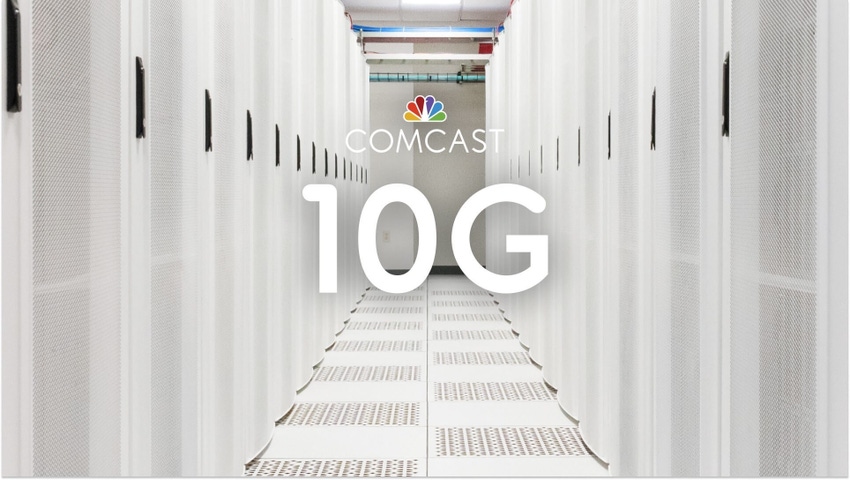Comcast launches symmetrical 10-Gigabit speeds on fiber
Comcast has gone nationwide with a 10-Gig upgrade of 'Gigabit Pro,' a targeted, Ethernet-based FTTP platform. Comcast is also pursuing 10-Gig speeds as it upgrades its widely deployed HFC network.

Tied to its broader "10G" initiative, Comcast announced Tuesday that it has launched symmetrical 10-Gig speeds for "Gigabit Pro," the operator's targeted fiber-to-the-premises platform. That new 10-Gig capability is now available nationwide, the company said.
Launched as a 2-Gig residential broadband service back in 2015, Gigabit Pro has been upgraded in recent years. Before heading to 10-Gig, the service delivered symmetrical speeds of 6 Gbit/s. Billed as a premium offering, Gigabit Pro runs $299 per month, plus installation costs.
Comcast has not announced how many of its 32.32 million broadband subs have opted for Gigabit Pro.
The "highly-targeted" Gigabit Pro service continues to be delivered on an Ethernet-based FTTP platform, Elad Nafshi, Comcast's EVP and chief network officer, said.
Update: As a point of clarification, availability, in this instance, means Comcast is able to provide the 10-Gig Gigabit Pro service to residential customers who want or need it, not that FTTP has been deployed across Comcast's US footprint. Under the targeted approach with Gigabit Pro, Comcast would pull fiber to the home on an on-demand basis to customers who actually order the service.
Comcast is also pursuing 10-Gig speeds on its widely deployed hybrid fiber/coax (HFC) network that is being upgraded to a distributed access architecture (DAA). That DAA platform, which is working in tandem with a new virtual cable modem termination system (vCMTS), will also underpin Comcast's DOCSIS 4.0 network upgrade that will usher in symmetrical multi-gig speeds starting later this year. Comcast is also starting to use its DAA setup to deliver targeted, EPON-based fiber broadband services via its new nodes.
Comcast's 10G initiative provides "optionality" by using HFC and FTTP, and gives the operator the ability to deliver fiber-based services to locations where there's consumer demand for it, Nafshi explained. "We're able to do that all while running as quick as we can on our network upgrade," he added.
In addition to speed, Comcast is also touting higher reliability, thanks to the use of real-time telemetry and AI capabilities, and the ability to support lower latencies on its 10G platform.
Nafshi said Comcast will have more details to share about the company's new low-latency capabilities later in 2023. In the meantime, the company has already implemented a new active queue management system nationally and has plans to deploy the low-latency aspects of the DOCSIS specifications.
Related posts:
— Jeff Baumgartner, Senior Editor, Light Reading
About the Author(s)
You May Also Like












